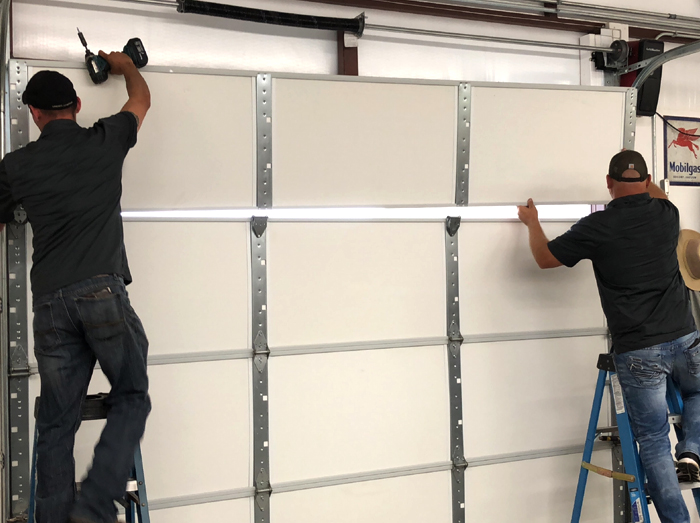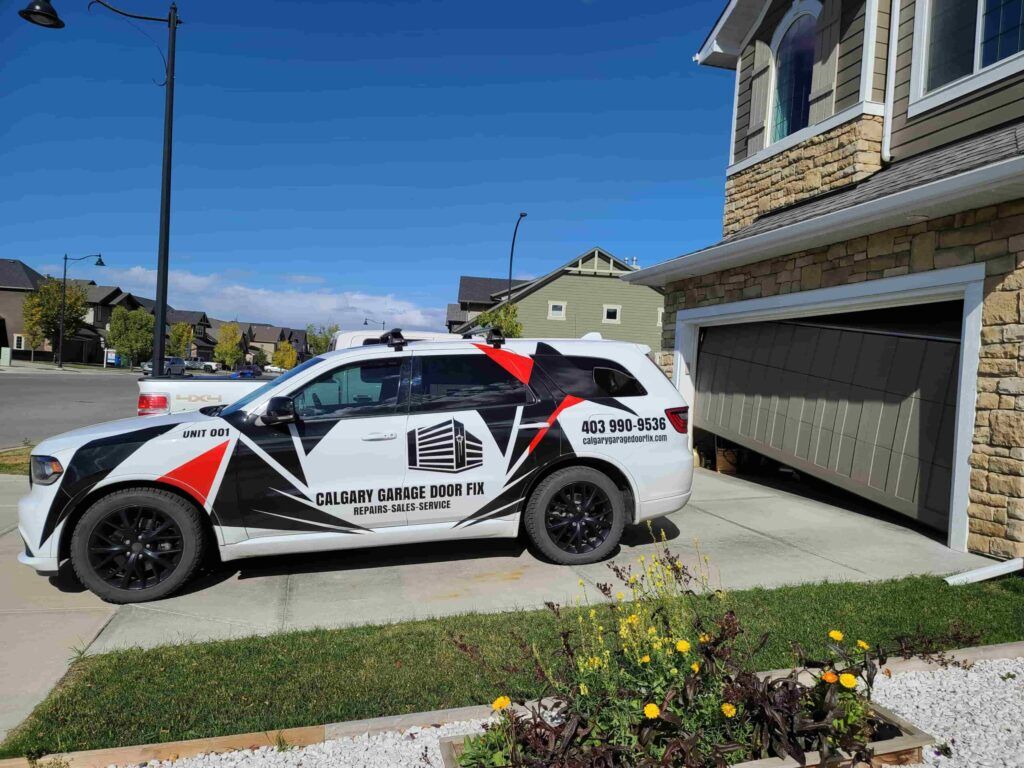Usual Issues and Solutions for Homeowners With Garage Doors
As a house owner, you might deal with numerous common garage door issues that can disrupt your daily routine. From malfunctioning openers to loud procedure, these problems can be frustrating. Luckily, several options are uncomplicated and can save you time and money. Nevertheless, some issues may call for specialist assistance. Allow's discover the most frequent garage door issues and how you can tackle them efficiently.
Malfunctioning Garage Door Openers
When your garage door opener starts acting up, it can be discouraging, especially if you count on it daily. You might find that it doesn't react to your remote or the door opens and shuts unpredictably. If that's not the trouble, examine the opener's power source.
Don't think twice to consult your individual handbook for repairing suggestions specific to your design, or think about calling an expert if the issue persists. Taking these actions can assist recover your garage door's capability in no time.
Misaligned Garage Door Tracks
If your garage door isn't opening up or closing efficiently, misaligned tracks may be the wrongdoer. Usual reasons include deterioration or unexpected bumps that interrupt the alignment. Fixing these track concerns can recover your door's function and maintain it running safely.
Root Causes Of Misalignment
Imbalance of garage door tracks can take place for a number of reasons, typically leading to frustrating functional problems. If your garage door gets bumped or hit, that effect can misalign the tracks. Determining these reasons can aid you comprehend why your garage door isn't operating efficiently.
Dealing With Track Concerns
Taking care of track concerns with misaligned garage doors calls for a careful approach to guarantee smooth operation. Initially, inspect the tracks for bends or particles that may obstruct activity. Make use of a level to check if the tracks are right; if not, carefully touch them back into alignment with a rubber mallet. Next off, validate the braces holding the tracks are tight; loose screws can trigger misalignment. If the tracks are considerably damaged, take into consideration changing them. As soon as straightened, oil the tracks with a silicone-based spray to decrease friction. Examination the garage door's procedure to validate it opens up and shuts smoothly. Normal upkeep will certainly aid stop future track concerns and maintain your garage door functioning appropriately.
Broken Springs
When your garage door suddenly declines to open or shut, it's commonly as a result of damaged springtimes. These springs birth the weight of the door, making it easy for you to raise or reduce it. If they snap, you'll observe that your door really feels hefty or won't move in any way.
To validate the problem, aesthetically evaluate the springtimes for spaces or breaks. If you suspect they're damaged, don't try to repair them yourself, as they're under high stress and can trigger injury. Instead, call an expert who can safely change the springtimes.
Routine maintenance can assist prevent spring failure, so keep an eye on their problem and lube them occasionally. If you're experiencing regular spring issues, think about updating to higher-quality springs that can hold up against more wear and tear. This aggressive approach can save you money and time in the future, guaranteeing your garage door runs efficiently.
Noisy Garage Doors
After resolving problems like busted springs, you may see one more usual problem: loud garage doors. If your garage door squeaks, rattles, or moans, it can be fairly frustrating, specifically if it's disrupting your tranquility. The sound typically originates from damaged rollers, loose equipment, or lack of lubrication.
Beginning by evaluating the rollers and hinges. If they're filthy or damaged, cleansing or replacing them can significantly reduce sound. Next off, check for loosened screws or screws; tightening them can eliminate rattling noises. Do not fail to remember to oil the relocating get rid of a silicone-based spray or garage door lubricant. This will certainly aid minimize friction and noise.
If your door still appears like a dinosaur, think about consulting a professional. Normal maintenance can prevent noisy garage doors and prolong their lifespan, guaranteeing you take pleasure in a quieter, smoother operation.
Garage Door Remote Issues
Several house owners experience disappointment with garage door remote problems at some point. If your remote isn't functioning, the first action is to examine the batteries. Weak or dead batteries are often the perpetrators. Replace them and see if that fixes the trouble. If the remote still will not function, try reprogramming it. Consult your garage door opener guidebook for particular instructions.
Occasionally, interference from various other electronics can impact your remote. Look for any type of close-by devices that could be creating a signal interruption. If that doesn't aid, check the remote for physical damage, like cracks or damaged switches.
One more typical concern is distance; you might simply be too far from the garage door. They can detect and repair any hidden problems with your garage door system.
Weather Condition Stripping Problems
If you see drafts, water leaks, or raised energy expenses, your garage door's weather removing may be put on out. Understanding how to find indicators of wear and recognizing setup ideas can help you preserve an appropriate seal - garage doors nanaimo. When it's time for a replacement, you'll have a lot of choices to pick from
Indicators of Put On
As you utilize your garage click here to find out more door over time, the weather removing can begin to show indicators of wear, which is crucial to resolve. If you see the stripping is weak or tearing away from the door, it's time to take activity. You may also find that your garage door does not seal effectively, leading to boosted energy costs or parasite troubles.
Setup Tips
When you notice use on your garage door's weather condition stripping, resolving the installment can make a significant distinction. First, verify you have the best kind of weather removing for your garage door. Step the door properly to cut the stripping to the suitable length. Clean the surface area where you'll apply the weather condition removing, eliminating any dirt or debris to assure a solid bond. Use a top quality glue or adhere to the supplier's instructions for installation. Make certain it's straightened correctly to secure spaces properly. Routinely check the installation for any type of signs of damage or detachment. By taking note of these information, you'll improve your garage door's insulation and protect your home from the components.
Replacement Options
While you may have mounted your garage door's weather condition stripping properly, wear and tear can still bring about problems that demand replacement. If you notice drafts, moisture, or pests entering your garage, it's time to contemplate new weather stripping. Search for alternatives like vinyl or rubber products, which offer much better insulation and durability. Procedure your door's dimensions accurately to guarantee a correct fit, and choose self-adhesive strips for very easy installation. If you favor a more robust service, think about employing an expert to set up a new limit seal. Regularly examining and replacing weather condition removing not only boosts your garage's power effectiveness however also secures it from damages. Don't wait up until you deal with larger problems-- act now!
Sensor Breakdowns

Start by checking the sensing unit placement. Make sure both sensors encounter each various other and are level.
If the sensing units appear undamaged but the door still won't close, it might be time to change them. With a little troubleshooting, you can typically solve sensor issues and get your garage door functioning smoothly once more.
Regularly Asked Concerns
Exactly how Usually Should I Preserve My Garage Door System?
You should maintain your garage door system a minimum of two times a year. Regular checks for wear, lubrication go to the website of moving components, and readjusting the tracks can keep it operating efficiently and extend its life expectancy considerably.
Can I Mount a Garage Door Myself?
Yes, you can install a garage door on your own, yet it requires cautious preparation and more tips here the right tools. Ensure you comply with the maker's directions carefully and consider safety precautions to stay clear of crashes throughout installment.
What Is the Typical Lifespan of a Garage Door?
The average life expectancy of a garage door is typically 15 to 30 years, depending upon products and maintenance. If you look after it well, you can optimize its durability and appreciate reputable efficiency.

Exactly how Do I Pick the Right Garage Door?
When you pick the right garage door, consider materials, style, and insulation. Consider your home's style, budget, and maintenance requirements. Do not neglect to inspect local guidelines and energy performance scores for optimal performance.
Are There Energy-Efficient Garage Door Options Available?
Yes, there are energy-efficient garage door alternatives readily available. You can pick protected doors, which help maintain your garage's temperature, or try to find versions with a high R-value to improve energy effectiveness and reduce energy prices.